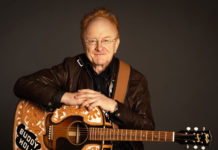I am not sure who coined the phrase
”
Anything worth having is worth fighting/working for,
”
but in my youth I assumed it was adult propaganda designed to
encourage patience, discourage taking shortcuts, and an attempt,
mostly unsuccessful I might add, to show a causal relationship
between taking out the trash and the car I wanted in high
school.
I am not sure who coined the phrase “Anything worth having is worth fighting/working for,” but in my youth I assumed it was adult propaganda designed to encourage patience, discourage taking shortcuts, and an attempt, mostly unsuccessful I might add, to show a causal relationship between taking out the trash and the car I wanted in high school. The older I get, however, the more I see the wisdom in the statement. There are no silver bullets or magic elixirs for attaining the treasures of life like good health or strong relationships with family and friends. The safety and well-being of our students are no exceptions.
Our schools have a variety of programs and initiatives to abate bullying and drug use and to help students manage the stress of adolescence, but, unfortunately, programs are not enough. Protecting students requires a commitment to building their internal strengths and coping mechanisms – a commitment that starts at home and must be shared communitywide. This month the Morgan Hill Unified School District Board of Trustees heard a presentation by Project Cornerstone explaining the 41 Developmental Assets – positive relationships, values, skills and positive self-concept – and the importance of building said assets in our students.
The 41 Developmental Assets come from research conducted by the Search Institute since 1989. They identify 20 external assets and 21 internal assets ranging from “Family Support” to “Bonding to School” and the impact of these assets on protecting youth from high-risk behaviors and promoting positive attitudes and behaviors. In 2003 the Search Institute surveyed more than 150,000 sixth to 12th graders in 202 communities. Their data indicates that 38 percent of the students who possessed 0 to 10 of the assets used illicit drugs compared to 1 percent of the students who possessed 31 to 40 assets. Sixty-two percent of the students who possessed 0 to 10 assets had violent behaviors while only 6 percent of the students with 31 to 40 were prone to violent behavior. As I mentioned, building assets also helps promote positive attitudes and behaviors. Twenty-seven percent of the youth surveyed who possessed 0 to 10 assets maintained good health while 88 percent of the students possessing 31 to 40 assets maintained good health, and 9 percent of the youth with 0 to 10 assets succeeded in school compared to 54 percent of the youth with 31 to 40 assets who succeeded in school.
The Morgan Hill Unified School District is building developmental assets in our students. Asset-building activities like mentoring programs and “Expect Respect” leadership groups are being implemented to support the many activities already in place, but this is not enough. Building 31 to 40 assets in each of our students requires communitywide commitment. Fortunately, the city has been a 41 Developmental Asset building partner for 10 years with Mayor Tate as its champion. The city of Morgan Hill Youth Action Council is an example of the city’s commitment to build assets in our youth. Still, the data indicates that we must do much more. When surveyed, 35 percent of fourth- to sixth-graders in Santa Clara County felt the adults in their communities valued children and youth and only 18 percent of our middle and high school students felt valued by adults.
Having lived in this community for more than a year now, I know this community values children and youth. In fact, I consider it one of our community’s most endearing qualities. The challenge is demonstrating to the youth – in ways comprehensible to them – how much they are valued. I wish there were a quick-fix, but, alas, it takes a lot of work. Besides the YAC, faith-based groups have mentoring programs, and service groups like Rotary have Interact clubs. These are great examples of asset-building activities, but our community cannot depend on schools, churches, or service groups alone.
Communities with success building developmental assets in youth are involved as businesses, neighborhoods, families and individuals. They ask themselves what they can do to make their community a place where young people have access to opportunities, experiences and relationships that build assets. One Ohio community implemented a Porch Cookie Campaign in which residents invite youth and adult neighbors over for cookies and conversation, a California community started dances for youth and senior citizens and an Idaho community organized a neighborhood Parent Resource Center with a wide range of education and support resources for parents.
Asset development is not an off-the-shelf program. It is a commitment to building the positive relationships, values, skills and self-concept young people need to thrive. As parents, ask your school how you can help. As community members, let’s ask ourselves what we can do to build positive relationships with our youth. Protecting our students from high-risk behaviors and promoting positive behaviors is worth fighting/working for. If you share my conviction, you can find a list of developmental assets and developmental asset building resources at www.search-institute.org; www.projectcornerstone.org; and www.parentfurther.com.
Wes Smith is the superintendent of Morgan Hill Unified School District. He lives in Morgan Hill with his wife and three children, who attend Morgan Hill schools.







